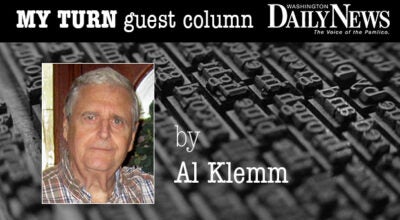Definition of book is being redefined
Published 12:24 am Sunday, May 8, 2011
What is a book? The definition blurs!
It used to be so easy to define a book: a sheaf of bound, printed pages. Then, the modern publishing industry defined all sorts of criteria of the printed volume – length, size, style, color and cost to name a few. With the introduction of the digital book, that book definition is changing.
When adapting a destructive technology like digital books, the new technology initially retains symbols of the old technology as familiar user guides. Then, with the passage of time, familiar concepts fade away, replaced by new ideas and ways of accomplishing the task. Let’s take a quick look at each print book criterion and see how the digital revolution is reimagining the book.
A traditional print publication is considered a book when it is long enough that a buyer is willing to pay enough to cover the costs of its creation. However, with our modern, short attention span, varied e-book lengths are now published. E-book pamphlets, single chapters (Amazon Singles) or even single short stories have been published at 99 cents or given away as loss leaders. Longer and complex e-books sell for $9.95 or more. Low production costs allow the e-book author to sell his work in any length with perceived quality and length shading the selling price.
Physical print book size is traditionally dictated by bookseller library shelf size. Print books are mostly a standard size with outsized books demanding greater prices, usually reserved for children’s books or coffee table tomes. However, physical size has no meaning with the e-book. Readers select a download e-reader format and the digital book fills that space č smartphone, Kindle, Nook, IPad or other screen sizes.
Book style has been traditionally dictated by its bookshelf home. Leather-bound hardcover books were proper for elegant settings while paperback romance novels were strewn about in abandon. With digital books, style is a reader choice. The e-reader user determines font, background color and the format size with ease, limited only by the e-reader capability.
Paper color in traditional print books varies from brilliant white to specialty colors of most hues, with mass-market books printed on low-cost, off-white paper. However, digital book color is e-reader user defined. Text color, background color and photo colors and styles can be varied to fit the mood or occasion.
Costs associated with printing, marketing, labor and transportation determines, in part, the final selling price of a printed book. Few of those costs are necessary for the digital book: only editing and promotion costs. So, total e-book costs are very low, giving the publisher and author much greater opportunities for profit – if their readers value the product enough to pay a higher price.
I should note that all traditional book content offerings are available in the e-book format č from romances to academic textbooks. However, entirely new content offerings have appeared.
Blog postings and tweets that pertain to a particular subject have been successfully combined into e-books that are capturing large numbers of readers.
Experimental books have appeared that allow the reader to choose from multiple adventure paths to a unique endingč one chosen by options taken by the reader.
Magazine-like article books are available, complete with video and sound, interactive charts and photos that enlarge with a click. Many of these magazine/books are frequently updated with new content and certainly capture the reader with a unique, timely experience.
Lengthy or multi-volume books, traditionally discouraged as print books because of cost, are little problem for the e-book format.
They only require a lengthy attention span of the reader, something that is becoming scarce.
So, the definition of the book continues to blur as traditional criteria have little meaning in the fledgling e-book world.
I guess the really impressive thought is that the rethinking process of converting print books into e-books is just a few years old. Only time will tell what exciting new offerings will become available.
This week’s quote: “Choose an author as you would a friend.” – Wentworth Dillon




